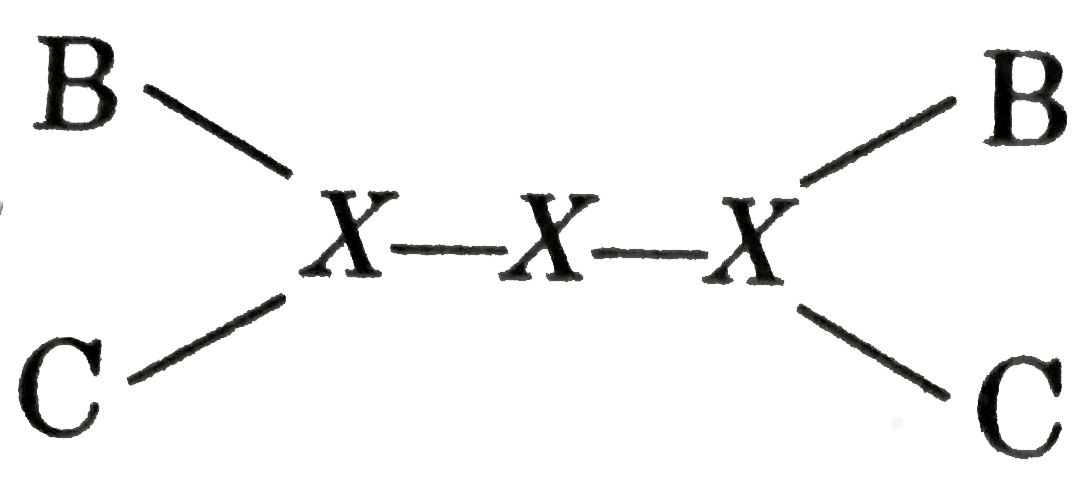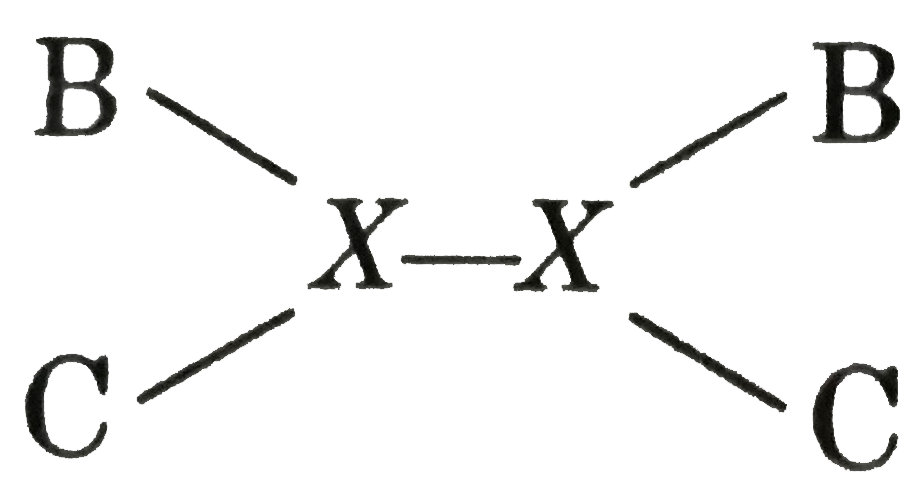Calculate the resonance energy of gaseous benzene from the given data
ΔHC−H=416,ΔHC−C=331,ΔHC=C=591,ΔHsub(C,graphite)=718
ΔHdiss(H2,g)=436 and ΔHf(benzene,g)=83 (all unit in kJmole−1)
354
271
437
83
The correct Answer is:B
Required reaction ⇒6C(graphite)+3H2(g)→C6H6(g)
1. 6C(g)+6H(g)→C6H6(g)
ΔH1=−(6×ΔHC−H+3ΔHC=C+3ΔHC−C)=−(6×416+3×591+3×331)=−5262kJmole−1
2. 6C(graphite)→6C(g)ΔH2=6×718=4308
3. 3H2(g)→6H(g)ΔH3=3×436=1308
Adding (1)+(2)+(3)
6C(grapite)+3H2(g)→C6H6(g)
ΔH=ΔH∘.f(C6H6,(g))=ΔH1+ΔH2+ΔH3=354kJmole−1
Hence resonance energy ΔHf(cal.)−ΔH∘.f(theo)=354−83=271kJmole−1
Topper's Solved these Questions
- THERMODYNAMICSBook:RESONANCEChapter:THERMODYNAMICSExercise:Exercise -2 Part-I: Only one option correct type
Explore 23 Videos
- THERMODYNAMICSBook:RESONANCEChapter:THERMODYNAMICSExercise:Exercise-2 II: Single and double value integer type
Explore 16 Videos
- THERMODYNAMICSBook:RESONANCEChapter:THERMODYNAMICSExercise:H-1
Explore 1 Video
- TEST SERIESBook:RESONANCEChapter:TEST SERIESExercise:CHEMISTRY
Explore 50 Videos
Similar Questions
Calculate the resonance energy of gaseous benzene form the following data.
BE(C−H)=416.3kJmol−1
BE(C−C)=331.4kJmol−1
BE(C=C)=591.1kJmol−1
ΔsubHΘ(C,graphite)=718.4kJmol−1
ΔdissHΘ(H2,g)=435.9kJmol−1
ΔfHΘ(benzene,g)=82.9kJmol−1
View SolutionCalculate the electron affinity of iodine with the help of the following data (given in Kcal/mole).
(ΔHfor)Nal=−68.8,(ΔHsub)Na=25.9,12(ΔHsub+ΔHdiss)I2=25.5,(IP)Na=118.4,(U)Nal=−165.4
View Solution
Knowledge Check
Calculate bond energy of X−X bond from the following data.

ΔHfofX(g)=+300kJ/mole
 A400 kJB200 kJC100 kJD150 kJ
A400 kJB200 kJC100 kJD150 kJCalculate resonance enthalpy of CO2(g) from following data:
ΔH∘combustion[Cgraphite]=−390Kj/mol
ΔH∘Sublimation[Cgraphite]=−715Kj/mol
ΔHB.E.[O=O]=500KJ/mol
ΔHB.E.[C=O]=875KJ/molA−40KJ/molB−145KJ/molC−72.5KJ/molD−290KJmolA gaseous mixture of propane, acetylene and CO2 is burnt in excess of air. Total 4800 KJ heat is evolved . The volume of CO2 formed during combustion is 224 liters at STP.
The total evolved heat is used to perform two separate process:
(i) Vapourising 87.5% of water (liquid) obtained in the process of burning the original mixture.
(ii) Forming 3808 litres ethylene measured at STP from its elements.
ΔHH−H=435KJ/mol ΔHC−H=416KJ/mol ΔHC−C=347KJ/mol
ΔHC−C=615KJ/mol, ΔHC−C=812KJ/mol ΔHsublimationof (C,s)=718KJ/mol
ΔH∘f(C2g)=−394KJ/mol ΔH∘f(H2O,l)=−286KJ/mol. ΔH∘f(H2O,g)=−247KJ/mol.
ΔH∘r×nforC2H2(g)+H2g→C2H4(g)A−220kJ/molB−180KJ/molC−250KJ/molD−200KJ/mol
What is the Bond energy (In kJ/ mol) of C−H in Methane from the following data?
ΔHf[CO2(g)]=−394kJ/molΔHf[H2O(l)]=−285kJ/molΔHsiblimation{Carbon (graphite)}=+716kJ/molΔHcombustion[CH4(g)]=−890kJ/molBond energy(H−H)=435kJ/mol
View SolutionCalculate resonance energy of C6H6(g).
Given :Δf[C6H6(g)]=−360kJmol−1ΔHSub[C(graphite)]=716kJmol−1B.E.H−H=437kJmol−1B.E.C=C=620kJmol−1B.E.C−C=340kJmol−1B.E.C−H=490kJmol−1
View SolutionUsing the data (all values are in kilocalorie per mole at 25∘C) given below, calculate the bond enegry of C−C and C−H bonds.
ΔHΘ combustion of ethane =−372.0
ΔHΘ combustion of propane =−530.0
ΔHΘ for C( garphite) →C(g)=+172.0
Bond enegry of H−H bond =+104.0
ΔfHΘofH2O(l)=−68.0
ΔfHΘofCO2(g)=−94.0
View SolutionA gaseous mixture of propane, acetylene and CO2 is burnt in excess of air. Total 4800 KJ heat is evolved . The volume of CO2 formed during combustion is 224 liters at STP.
The total evolved heat is used to perform two separate process:
(i) Vapourising 87.5% of water (liquid) obtained in the process of burning the original mixture.
(ii) Forming 3808 litres ethylene measured at STP from its elements.
ΔHH−H=435KJ/mol ΔHC−H=416KJ/mol ΔHC−C=347KJ/mol
ΔHC−C=615KJ/mol, ΔHC−C=812KJ/mol ΔHsublimationof (C,s)=718KJ/mol
ΔH∘f(C2g)=−394KJ/mol ΔH∘f(H2O,l)=−286KJ/mol. ΔH∘f(H2O,g)=−247KJ/mol.
Sum of enthalpies of combustion of C3H8(g) and C2H2g) is :
View SolutionA gaseous mixture of propane, acetylene and CO2 is burnt in excess of air. Total 4800 KJ heat is evolved . The volume of CO2 formed during combustion is 224 liters at STP.
The total evolved heat is used to perform two separate process:
(i) Vapourising 87.5% of water (liquid) obtained in the process of burning the original mixture.
(ii) Forming 3808 litres ethylene measured at STP from its elements.
ΔHH−H=435KJ/mol ΔHC−H=416KJ/mol ΔHC−C=347KJ/mol
ΔHC−C=615KJ/mol, ΔHC−C=812KJ/mol ΔHsublimationof (C,s)=718KJ/mol
ΔH∘f(C2g)=−394KJ/mol ΔH∘f(H2O,l)=−286KJ/mol. ΔH∘f(H2O,g)=−247KJ/mol.
Total moles of hydrocarbon gases taken in the initial mixture
View Solution